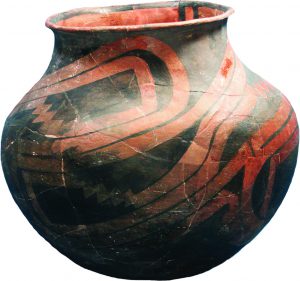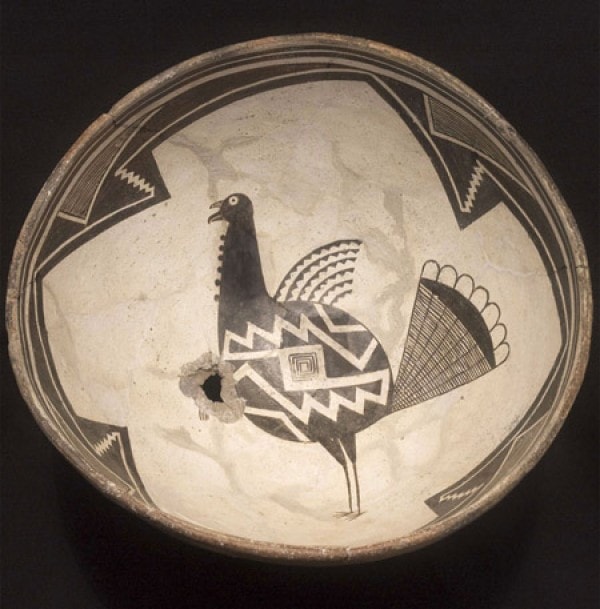- Home
- >
- Ancient Cultures
- >
- Mogollon
People who lived in the Mogollon (muggy-own) region in the distant past had much in common with people living in the Ancestral Pueblo region, and were probably also among the ancestors of modern Pueblo people and even other contemporary communities in the southern Southwest and Mexico.

The earliest Mogollon villages comprise clusters of small pithouses that people entered at ground level rather than through the roof. Potters in these communities made brown ware and red ware pottery. Like their neighbors to the north, people in this region also built great kivas, but the shapes of these structures were different from those in the north.
After about A.D. 1000, the Ancestral Pueblo and Mogollon regions became more similar. Mogollon populations began to live in stone-masonry or adobe pueblos, and in some areas, potters began creating black-on-white pottery similar to that made in the north.

The Mogollon region includes the Mimbres culture area of southwest New Mexico, which archaeologists see as a branch of Mogollon. Mimbres is famous for the beautiful and expressive black-on-white pottery artisans produced there, which depicts animals, people, and narrative scenes, as well as geometric designs.
Want to learn more? Explore the major concepts, places, cultures, and themes that Southwestern archaeologists are exploring today in our Introduction to Southwestern Archaeology.
Details
Related to This
-
Location Gila Cliff Dwellings National ...
-
Location Three Rivers Petroglyph Site
-
Location Kinishba Ruins National Histor...
-
Location Casa Malpais Archaeological Pa...
-
Post What’s in a Notch?